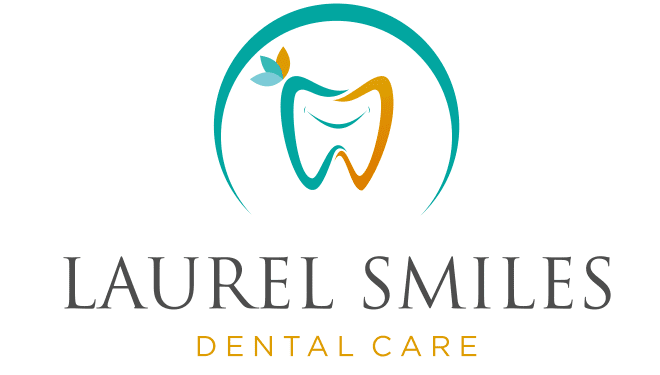How Does Whitening Toothpaste Work?
Over time, certain foods, aging, and other factors may make your teeth appear dull, yellow, or stained. If you are not happy with the way your smile looks, your confidence can suffer, impacting multiple aspects of your life.
You may notice your local shop sells toothpaste that promises to whiten your teeth. But can a change in toothpaste really get you the smile of your dreams? Our dentist, located in Laurel, MD, describes how whitening toothpaste can brighten your smile.
How Does Whitening Toothpaste Differ from Traditional Toothpaste?
Toothpaste is a crucial oral hygiene tool that we use during tooth brushing to remove plaque, food residue, and surface stains on our smiles. Traditional toothpaste contains abrasive substances which work to dissolve stains on the surface of your enamel, making your smile brighter and cleaner.
Specified teeth whitening toothpaste uses additional ingredients to target deeper stains within your enamel to better enhance the color and appearance of your smile. It features hydrogen peroxide, a bleaching agent, which helps to remove stubborn stains on your teeth.
In addition to the abrasives found in regular toothpaste, whitening toothpastes often contain peroxide compounds like hydrogen peroxide or carbamide peroxide. These are the same ingredients used in many professional whitening treatments. Peroxide is highly effective because it breaks the chemical bonds that hold stains to your teeth, essentially “bleaching” them away and restoring the natural whiteness of your enamel.
By combining the stain-lifting power of abrasives with the stain-breaking action of peroxide, whitening toothpaste can provide a noticeable boost in brightness, especially for surface-level stains caused by coffee, tea, or tobacco.
Why Do Whitening Toothpastes Use Gentle Abrasives?
The abrasives found in whitening toothpaste are carefully designed to be softer than your tooth enamel. This is intentional—by making them less hard than your enamel, these tiny particles can gently polish away surface stains caused by coffee, tea, or plaque, without scratching or damaging the underlying tooth structure. Think of it like using a soft scrub pad rather than steel wool: you want to clean, not harm.
As a result, you get effective stain removal for a brighter smile, while keeping your enamel protected and healthy.
What Role Do Baking Soda, Silica, and Dicalcium Phosphate Play in Whitening Toothpaste?
Many whitening toothpastes rely on gentle abrasives to enhance their brightening power. Ingredients like baking soda, silica, and dicalcium phosphate are commonly included for this reason. These components work by scrubbing away surface stains left behind by foods, drinks, and everyday plaque—not unlike a gentle buffer for your teeth.
What’s important is that these particles are softer than tooth enamel. This means they can help polish your teeth without causing damage, giving you a brighter appearance without risking enamel erosion. If you check the labels on many whitening toothpastes, from Crest to Colgate, you’ll spot one or more of these mild abrasives working behind the scenes to keep your smile looking fresh and clean.
You should use this type of toothpaste as directed in order to achieve optimal results.
How Should You Use Whitening Toothpaste to Protect Your Enamel?
While whitening toothpaste can help you achieve a more radiant smile, it’s important to be mindful of how often you use it. Some formulas are gentle enough for daily brushing, but others are more intensive and should only be used once a day, or even less frequently.
To avoid harming your enamel, always read and follow the instructions provided on the product packaging. Overuse can lead to tooth sensitivity or weaken your enamel over time, so sticking to the recommended schedule is key for both effectiveness and safety.
Is Whitening Toothpaste Safe for Daily Use?
One common question patients have is whether it’s safe to use whitening toothpaste every day. The answer depends on the formula you select and how closely you follow its usage instructions. Many whitening toothpastes are designed for daily brushing, but some are meant for more limited use to protect your enamel from potential sensitivity or erosion.
To keep your smile healthy, be sure to:
- Read and stick to the directions provided on the toothpaste packaging.
- Keep an eye out for the American Dental Association (ADA) Seal of Acceptance, which indicates the product has been evaluated for safety and effectiveness.
- If you experience any increased sensitivity or discomfort, scale back use and consult your dentist for guidance.
By making informed choices and brushing as instructed, you can safely enjoy the benefits of whitening toothpaste without compromising your enamel. When choosing a whitening toothpaste, you should select one that is approved by the American Dental Association to get the treatment you can trust.
What Are the Risks of Using Non-ADA-Approved Whitening Toothpastes?
It’s important to be cautious about choosing toothpastes that don’t carry the approval of the American Dental Association, especially trendy options like charcoal toothpaste. While these products might promise quick stain removal, their highly abrasive formulas can do more harm than good.
Charcoal-based toothpastes, for instance, may scrape away some surface stains, but they can also wear down your enamel over time. Once enamel is gone, it doesn’t grow back—leaving your teeth more sensitive and prone to cavities and other dental issues.
For your smile’s safety and long-term health, stick to toothpastes that have been evaluated and approved by the ADA. This way, you can confidently work toward a whiter smile without putting your enamel at risk. You should continue good oral hygiene habits, including visiting your dentist for regular cleanings and exams, to maintain a healthy and beautiful smile.
Are There Other Ways to Brighten My Smile?
Though whitening toothpaste can help you get a brighter smile, some tooth discoloration may require intervention from your dentist to amend. Your dentist can work with you to develop a cosmetic treatment plan to enhance your unique smile during a consultation appointment.
Your dentist can complete teeth whitening treatment in their office with one appointment. During this session, your dentist applies whitening gel to your teeth and uses specialized light to activate bleaching agents to brighten your smile. Dentists recommend this option over store-bought whitening treatments for personalized care and minimized side effects.
They can offer a whitening treatment that you can take home and complete at your convenience as well. This features custom-made trays that you fill with whitening gel and wear as directed to gradually whiten your teeth.
Your dentist may also suggest other cosmetic dental procedures to help you get the whiter smile of your dreams. Dental bonding can cover dull teeth with composite resin to enhance their appearance. A dentist may also recommend porcelain veneers, which are cap-like shells that adhere to the front of your teeth for long-lasting smile enhancement benefits.
Find Professional Teeth Whitening in Laurel, MD
Laurel Smiles Dental Care offers professional teeth whitening services and other cosmetic dental treatments to patients in Laurel, MD. Dr. Grigoryan also specializes in general, implant, and restorative dentistry, including periodontal care, for patients of all ages. To schedule a consultation with our practice, contact our staff online or reach us by phone at 301.200.1315.


